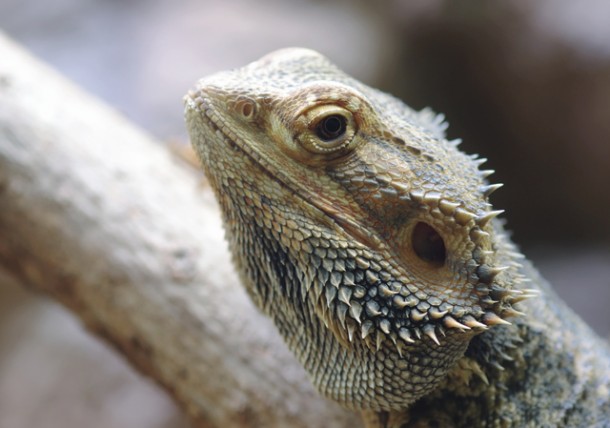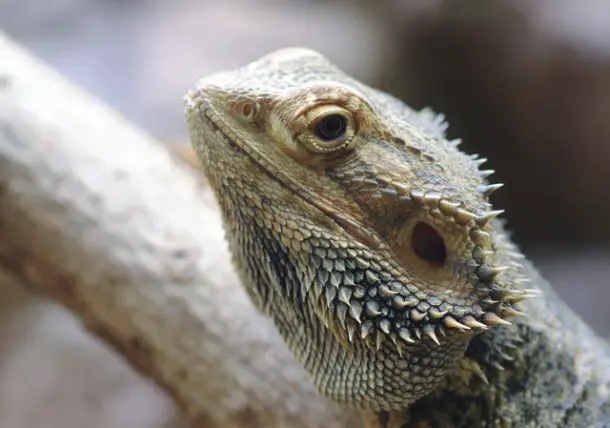Bearded dragons are fascinating creatures that have been gaining popularity as pets over the years. These lizards are known for their unique appearance, docile nature, and relatively easy care requirements. However, many people wonder whether bearded dragons are cold-blooded or not.
First of all, it is essential to understand what it means to be cold-blooded. Cold-blooded animals, also known as ectotherms, rely on external sources of heat to regulate their body temperature. So, are bearded dragons cold-blooded? The answer is yes, they are. Bearded dragons are ectothermic, which means that they rely on their environment to regulate their body temperature.

Are Bearded Dragons Cold Blooded?
Bearded dragons are fascinating creatures that have become increasingly popular as pets in recent years. One of the most common questions that people have when it comes to these lizards is whether they are cold-blooded or not. In this article, we will explore this question in detail and provide you with all the information you need to know about the body temperature of bearded dragons.
Understanding Cold-Blooded Animals
Cold-blooded animals, also known as ectothermic animals, are those whose body temperatures are regulated by the environment around them. This means that they cannot generate their own body heat, and their body temperature changes according to the temperature of their surroundings. Reptiles, including bearded dragons, are cold-blooded animals.
Bearded dragons, like other reptiles, are able to regulate their body temperature by moving to different areas of their habitat. They bask in the sun to warm up, and move to cooler areas when they need to cool down. This is why it is important to provide bearded dragons with a habitat that replicates their natural environment, with both warm and cool areas.
Bearded Dragons and Body Temperature
Bearded dragons have a preferred body temperature range of 85-95°F (29-35°C). This temperature range is important for their metabolism and overall health. If the temperature is too cold, they may become lethargic and have trouble digesting their food. If the temperature is too hot, they may become dehydrated and suffer from heat stroke.
To maintain their body temperature, bearded dragons have several physiological mechanisms. They have a specialized organ called the parietal eye, which can detect changes in light and help them find sunny areas to warm up. They also have a network of blood vessels in their skin, which can dilate or constrict to regulate their body temperature.
The Benefits of Cold-Blooded Animals
Being cold-blooded has several benefits for bearded dragons and other reptiles. For one, they do not need to expend energy on regulating their body temperature, which allows them to conserve energy. They can also survive on less food than warm-blooded animals, as their metabolic rate is lower.
Another benefit of being cold-blooded is that it allows bearded dragons to adapt to their environment. They can tolerate a wide range of temperatures, which means they can live in many different habitats. This adaptability has helped them thrive in different parts of the world.
Cold-Blooded vs. Warm-Blooded Animals
Warm-blooded animals, also known as endothermic animals, are those whose body temperatures are regulated by internal mechanisms. This means that they can generate their own body heat, and their body temperature stays relatively constant regardless of their surroundings. Mammals and birds are examples of warm-blooded animals.
Compared to warm-blooded animals, cold-blooded animals like bearded dragons have a lower metabolic rate and can survive on less food. They also have a greater tolerance for extreme temperatures, which allows them to live in many different environments. However, warm-blooded animals are better adapted to living in colder environments, as they can generate their own body heat.
Conclusion
In conclusion, bearded dragons are cold-blooded animals that rely on their environment to regulate their body temperature. They have several physiological mechanisms that help them maintain their preferred temperature range, and being cold-blooded has several benefits for their survival and adaptation. By providing them with a habitat that replicates their natural environment, we can ensure that they thrive as pets.
Frequently Asked Questions
Are Bearded Dragons Cold Blooded?
Bearded dragons are cold-blooded reptiles, which means that their body temperature is regulated by their environment. They cannot produce their own body heat, and they rely on external sources of heat such as the sun or heat lamps to warm themselves up. Their metabolism and activity levels are also affected by temperature, and they become sluggish and inactive in cold temperatures.
However, it is important to note that bearded dragons are not completely dependent on external sources of heat. They have the ability to regulate their body temperature to some extent by moving to warmer or cooler areas, and they also have some physiological adaptations that help them absorb and retain heat.
Overall, while bearded dragons are cold-blooded, they have some degree of control over their body temperature and can adapt to different environmental conditions.
What Temperature Range is Ideal for Bearded Dragons?
The ideal temperature range for bearded dragons is between 75 and 85 degrees Fahrenheit on the cooler end of their enclosure and 95 to 105 degrees Fahrenheit on the warmer end. This temperature gradient allows them to move between different heat levels to regulate their body temperature.
It is important to provide a basking area on the warm end of the enclosure for bearded dragons to bask and absorb heat. Additionally, it is essential to provide a UVB light source to help them synthesize Vitamin D3, which is necessary for calcium absorption and overall health. Proper temperature regulation is crucial for the health and well-being of bearded dragons.
Can Bearded Dragons Survive in Cold Temperatures?
Bearded dragons are native to arid regions of Australia, where temperatures can drop significantly at night. However, they are not adapted to survive in extremely cold temperatures for extended periods.
Exposure to cold temperatures can cause bearded dragons to become lethargic, lose their appetite, and even die if they are not able to warm up. It is crucial to provide a warm and stable environment for bearded dragons, particularly during the winter months, to prevent cold stress and related health issues.
How Do Bearded Dragons Regulate their Body Temperature?
Bearded dragons regulate their body temperature through a process called thermoregulation. They move between different areas of their enclosure to access varying temperatures and adjust their body temperature accordingly.
When they need to warm up, they bask in a warm area under a heat lamp or UVB light source. When they need to cool down, they move to a cooler area of their enclosure. This behavior allows them to maintain a stable body temperature and keep their metabolism and activity levels functioning properly.
How Can I Provide Adequate Heat for My Bearded Dragon?
To provide adequate heat for your bearded dragon, you will need to set up a heat lamp or ceramic heat emitter on one end of the enclosure to create a basking area. This area should be between 95 and 105 degrees Fahrenheit.
You can use a thermostat to regulate the temperature and prevent overheating. Additionally, you will need to provide a cooler area on the other end of the enclosure, with a temperature range between 75 and 85 degrees Fahrenheit.
It is important to monitor the temperature regularly and adjust the heat source as needed to ensure that your bearded dragon has access to the appropriate temperature gradient.
Reptile Keeper’s Experience With (Or actually WITHOUT) Salmonella
In conclusion, the answer to the question “Are Bearded Dragons Cold Blooded?” is a resounding yes. These reptiles are ectothermic, which means they rely on external sources of heat to regulate their body temperature. This is why bearded dragons are often seen basking in the sun or under heat lamps.
Despite being cold-blooded, bearded dragons are fascinating creatures that make great pets. They have unique personalities and are known for their friendly and docile nature. They are easy to care for and require minimal maintenance, making them a great choice for first-time reptile owners.
In summary, while bearded dragons may not be warm and fuzzy like some pets, they are still beloved by many for their unique characteristics and easy-going nature. Whether you’re a seasoned reptile owner or a first-time pet parent, a bearded dragon could be the perfect addition to your family.


